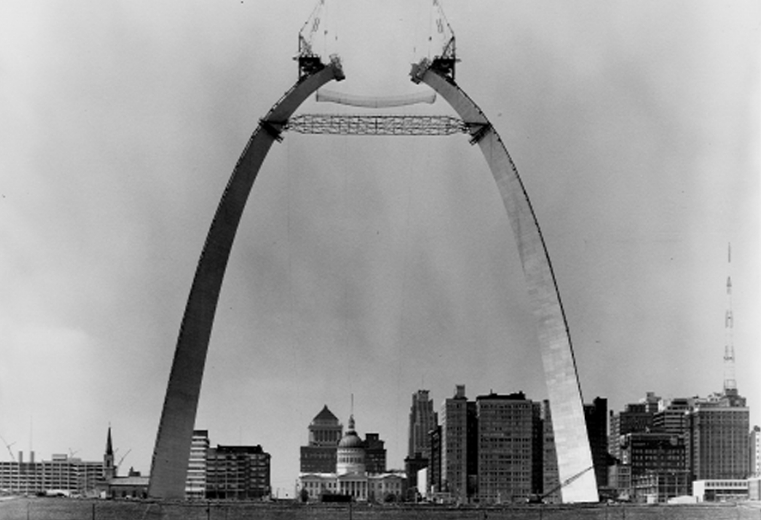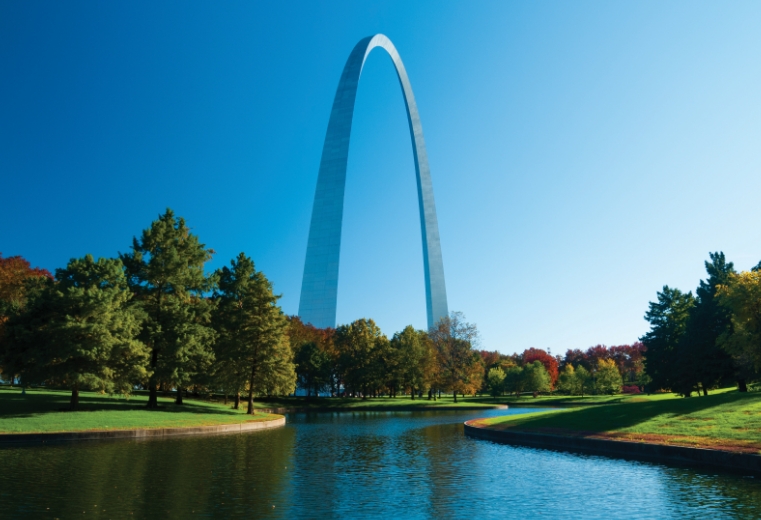A monument of iconic Innovation
The Gateway Arch has long been called the “Gateway to the West” but have you considered all the stories that lie beneath its iconic curve? Gateway Arch National Park is home to the tallest monument in the United States, over 200 years of shared St. Louis history, a beautiful urban national park, and so much more.
Plan Your VisitFacts & Figures
- 630 feet tall
- Tallest U.S. monument
- Designed by Eero Saarinen
- Construction completed in 1965

Our History
Gateway Arch National Park began in 1935 when it was founded by the National Park Service to commemorate Thomas Jefferson’s vision of a transcontinental United States. Formerly known as the Jefferson National Expansion Memorial, the national park includes the Gateway Arch, the Old Courthouse, and the 91 acre national park grounds.
Our National Park
Gateway Arch National Park includes many sights from above and so much more to do below. Plan your visit around all these things you can do:
- Tram Ride to the Top
- Riverboat Cruise
- Documentary Movie
- Virtual Reality Theater
- Museum Under the Gateway Arch
- National Park Grounds
- NPS Ranger-Led Programming
Our Events
Plan your visit around one of our exciting events! From NPS ranger-led programs to St. Louis celebrations, there is something for everyone. View our calendar to see what’s going on ahead of your visit to Gateway Arch National Park.

Skyline Dinner Cruise
Make any night special. Our flagship evening cruise features live music or a DJ, a chef-inspired menu and captivating views of the St. Louis.
Buy Tickets

Old Courthouse Grand Reopening
Join us on Saturday, May 3, 2025, for the grand reopening of the Old Courthouse! More details about the reopening festivities and exhibits coming soon.
Register Here

Sunday Brunch Cruise
The perfect Sunday starts here. Join us for the ultimate brunch experience on this 2-hour riverboat cruise featuring live entertainment, chef-inspired cuisine and great views.
Buy Tickets







